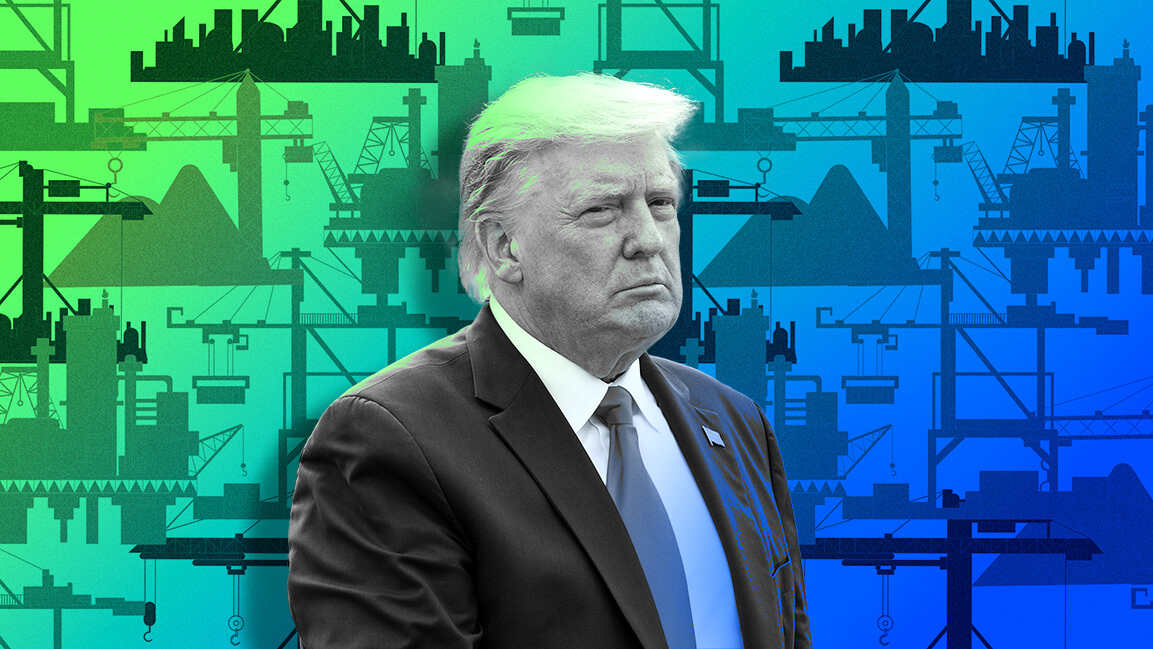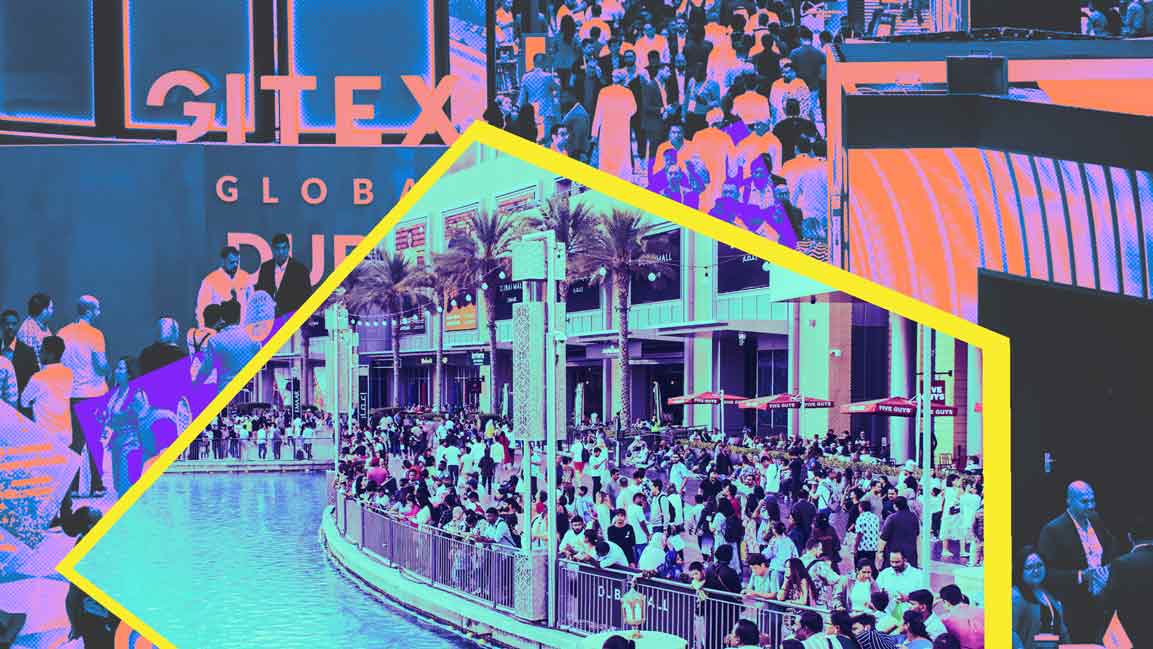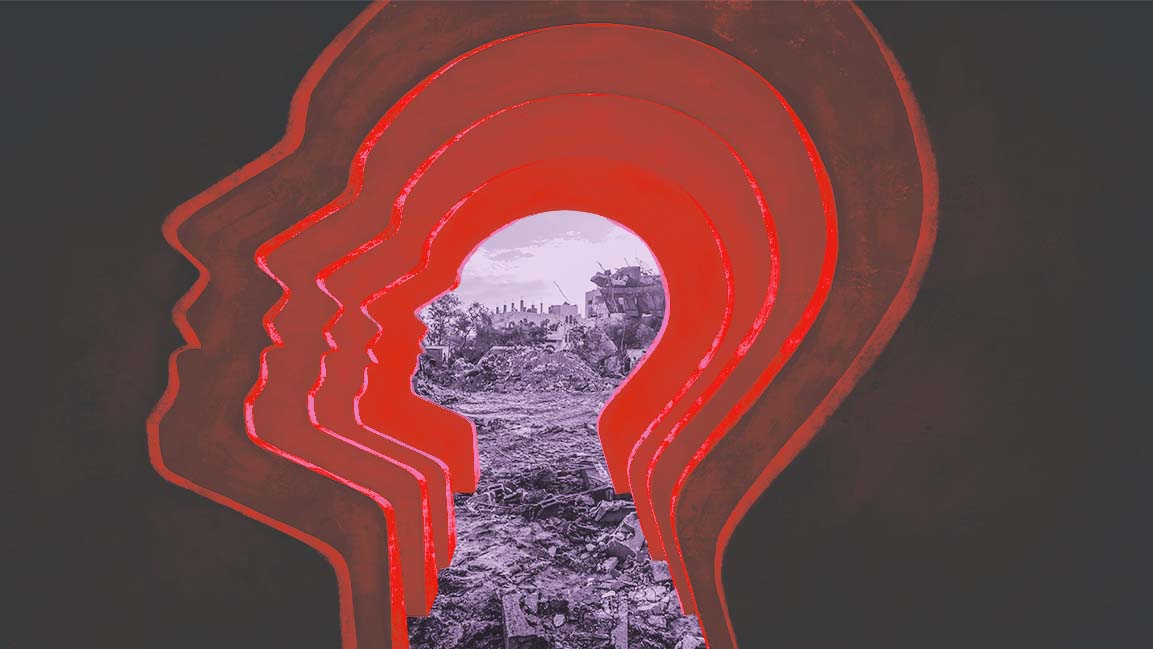- | 10:00 am
The GCC’s quiet exposure to Trump’s high-stakes trade strategy
Global markets face growing turbulence, and experts warn this isn’t just a blip—Trump’s moves signal a deliberate overhaul of global trade

Markets are on edge. Investors, both seasoned and new, have been watching their portfolios slip, reflecting growing anxiety about the global economy’s direction. The recent downturn goes beyond earnings reports or inflation data. At its core is a sharp shift in U.S. trade policy, driven by President Donald Trump’s aggressive and unpredictable approach.
Nicolas Michelon, Partner at Alagan Partners, views the current environment as unprecedented. “The last time I saw this level of volatility was during the subprime meltdown. But what we’re facing today isn’t market-driven—it’s manufactured. Unlike 2008, which was rooted in systemic risk and financial overreach, and the COVID-19 pandemic, which emerged from a health emergency, today’s market shock results from intentional disruption.”
Trump’s strategy appears to be centered around unpredictability, a tactic that sent shockwaves across financial systems. According to eToro’s market analyst Josh Gilbert, this approach is unsettling markets worldwide. “Trump is attempting to exert pressure on other nations, and it’s taking a heavy toll on global sentiment,” he said.
“Over 50 countries had already approached the U.S. to negotiate deals, which could potentially reverse some tariffs. But Trump’s refusal to roll back policies despite the market sell-off suggests more volatility is likely in the short term.”
“Markets and businesses depend on some degree of predictability. Trump is actively removing that. By changing positions overnight—imposing, suspending, then reimposing tariffs—he’s keeping everyone off balance. That unpredictability is not a bug. It’s the feature,” Michelon adds.
FOUR LAYERS OF STRATEGY
While the headlines focus on tariffs, Michelon argues that the real story lies in the strategic goals behind Trump’s trade actions.
“He’s playing on multiple fronts. First, he’s trying to weaken the U.S. dollar to boost American export competitiveness. Second, he’s pressuring the Federal Reserve into cutting rates, especially the 10-year yield, which is critical for refinancing U.S. debt—nearly $7 trillion worth.”
Third, Trump aims to coerce foreign manufacturers into shifting production to the U.S. “He wants to create an environment where exporting to the U.S. becomes more expensive than building inside it,” Michelon says. “But there’s a catch. The U.S. has offshored much of its industrial base. Rebuilding that capacity, especially in textiles, cars, and consumer electronics—is a tall order. There’s a ceiling to how much reshoring can actually be done.”
And the fourth objective? It may be the most overlooked. Michelon believes Trump is subtly promoting cryptocurrencies. “There’s a clear libertarian undercurrent here. Trump and some of his allies, like Peter Thiel and Elon Musk, have long been skeptical of fiat currencies and central banks. Shaking faith in the dollar and triggering systemic uncertainty makes crypto look more appealing as an alternative.”
THE U.S.- CHINA DUEL
At the center of the current storm is the intensifying trade standoff between the U.S. and China. According to Gilbert, this clash between the world’s two largest economies reverberates far beyond their borders. “This isn’t just a bilateral trade dispute anymore. Every escalation is dragging the rest of the world into the economic crossfire,” he says. “Trump is targeting more countries than anyone anticipated, which is stoking recession fears and dragging down earnings expectations across global markets.”
Michelon believes this showdown was always about China. “Even though Trump briefly eased tariffs on about 70 countries, he immediately ramped up the pressure on China with a 125% tariff—right after China announced their own 84% retaliatory measure,” he said. “He’s forcing U.S. allies and trade partners into a binary choice: maintain access to the U.S. market or keep their China-centric supply chains. But you can’t have both.”
Unlike past trade partners, China is not an easy opponent to corner. “China has multiple tools to strike back,” Michelon says. “They’ve already announced export restrictions on rare earth elements, critical for everything from semiconductors to clean energy tech. They also have far greater flexibility with their monetary policy, allowing them to devalue the yuan faster than Trump can drive down the dollar. And perhaps most importantly, China has shown it’s willing to absorb short-term economic pain to achieve long-term strategic independence.”
That willingness, Michelon argues, is something the U.S. may lack. “Trump wants quick wins, sound bites and political victories he can campaign on. But China plays the long game. This could make a ‘Phase Two’ trade deal, similar to the one Trump signed in his first term, much harder to achieve.”
IMPACT ON THE GCC
While the Gulf Cooperation Council (GCC) states are not the primary targets of Trump’s tariffs, they are not immune to the fallout. “The GCC isn’t at the forefront of this conflict, but that doesn’t mean it won’t feel the heat,” Michelon says.
“Many Gulf economies serve as intermediaries, especially the UAE, which plays a key role in global logistics and transshipment between Asia and the West. That business model is vulnerable to shifting trade routes and tightening restrictions.”
He points to risks for shipping, port operations, and construction. “The UAE’s ports have been vital links between Chinese suppliers and Western buyers. Financial institutions in the region are also exposed through trade financing. And the construction sector, which often depends on Chinese materials and U.S.-based service firms, could be squeezed from both sides.”
With traditional trade corridors under pressure, the Gulf states are already pivoting. “Countries like the UAE are accelerating free trade deals—like those with India or the DRC—to diversify away from U.S.-China friction,” he said. “But they’re in a race against escalating volatility.”
TARIFF SUSPENSION OR REAL SHIFT?
Some have hailed Trump’s 90-day suspension of reciprocal tariffs for most countries as a reprieve—but Michelon sees it more as political maneuvering than genuine de-escalation. “This is how he negotiates,” he said. “He sets the fire, then offers to put it out if you’re willing to deal. However, the architecture of the policy remains unchanged. He still aims to restructure the global trade order around American interests.”
Gilbert believes investors will need to get comfortable navigating ongoing instability. “Volatility is here to stay. If the past is any guide, we’ll continue to see sharp sell-offs followed by short-lived relief rallies. The challenge for investors is filtering the headlines and identifying real opportunities amid the chaos.”
OVERHYPED OR CALCULATED?
Some critics argue that the threat of a full-blown trade war may be exaggerated, but Michelon disagrees. “No, it’s not overhyped. This is deliberate. Go back to The Art of the Deal—Trump’s own blueprint. He promises disaster, so you come begging for a compromise. He talks about reclaiming the Panama Canal or annexing Greenland not because he plans to, but because he wants to test how much pushback he’ll get.”
That same approach, Michelon argues, is now being applied to the world economy. “The goal isn’t to destroy international trade. It’s to rebuild it on different terms, with America setting the rules. And the way he’s doing it—by forcing allies to choose between China and the U.S.—is as bold as it is dangerous. The rhetoric may be theatrical, but the intent is serious.”
As global markets brace for more turbulence, experts agree this is anything but business as usual. Trump’s actions are not temporary fluctuations. They’re the signs of a deep, intentional rewrite of how global trade works. Whether or not this approach succeeds politically or economically remains to be seen.
But one thing is clear: investors, governments, and businesses alike must adapt to a far more volatile and polarized global economy.






































